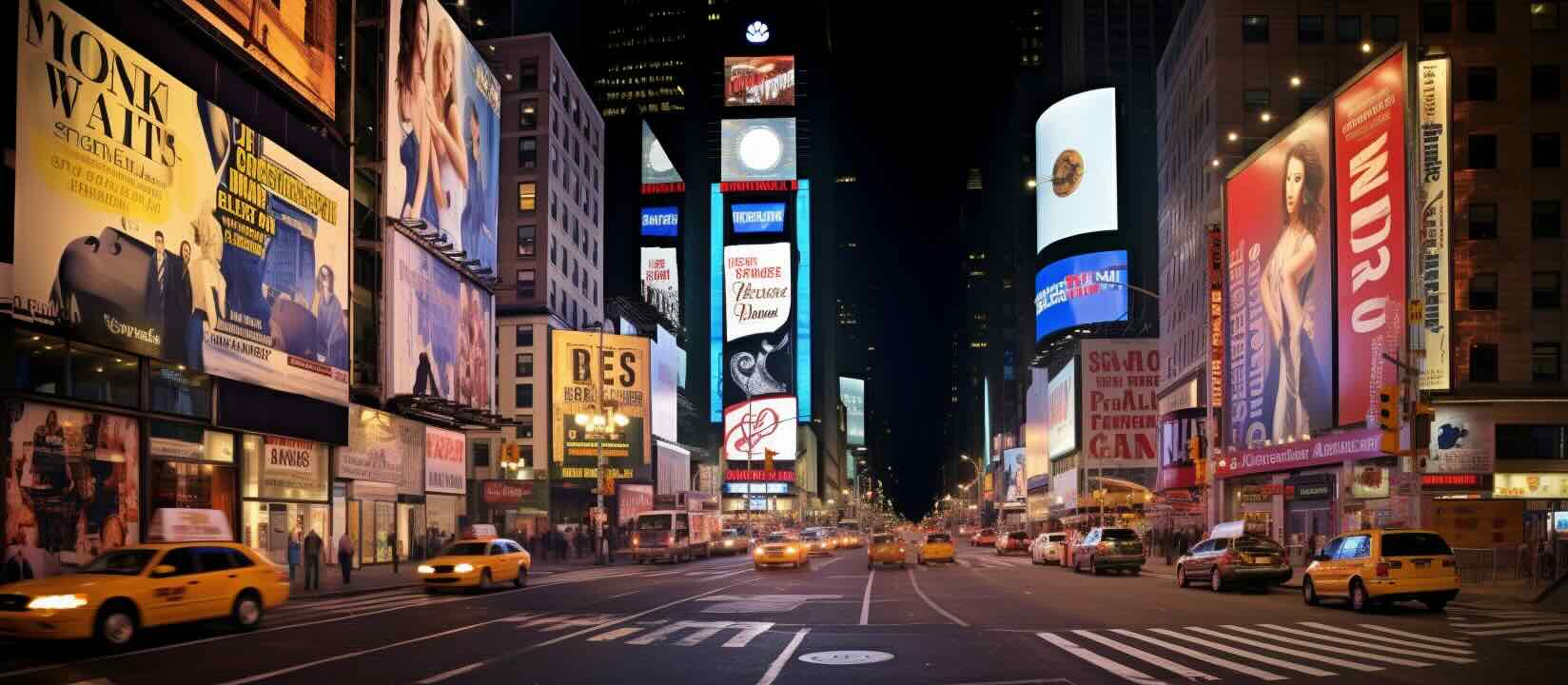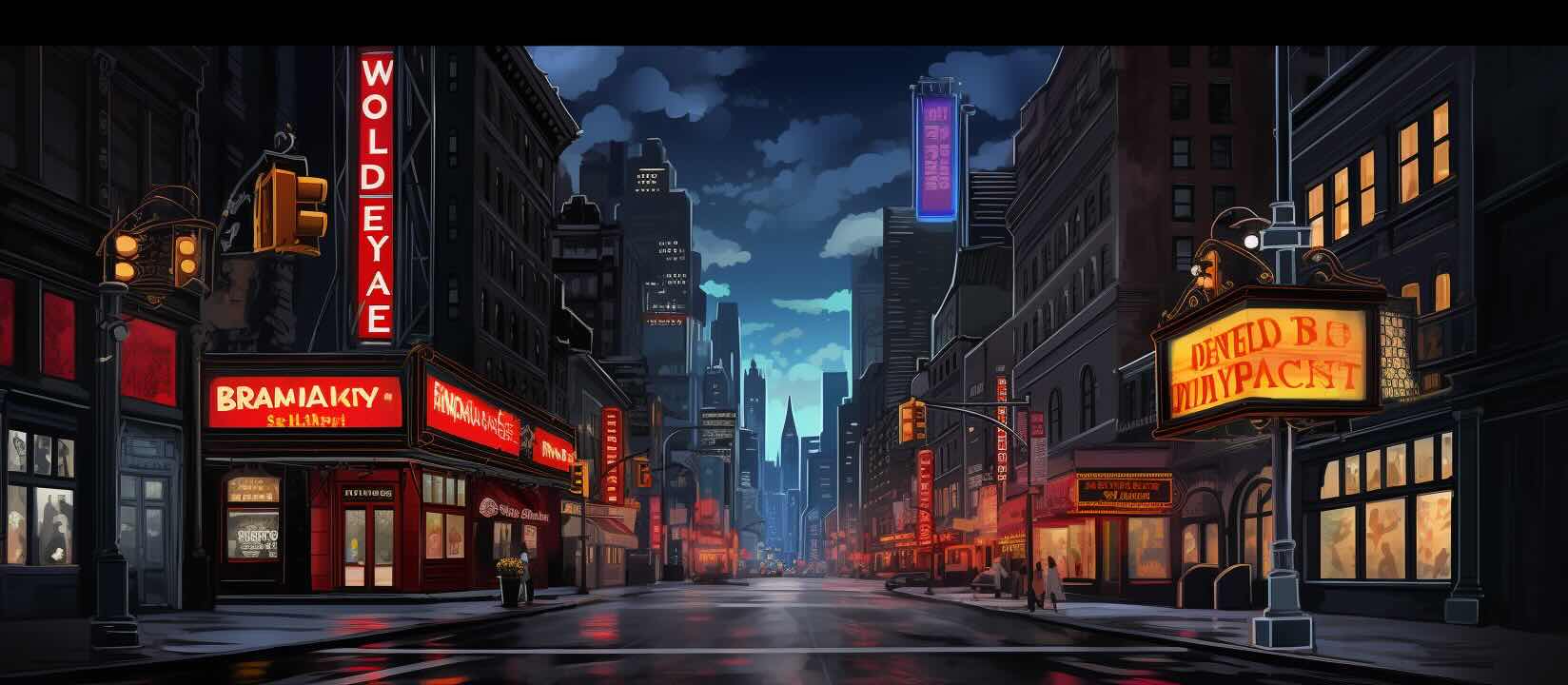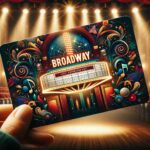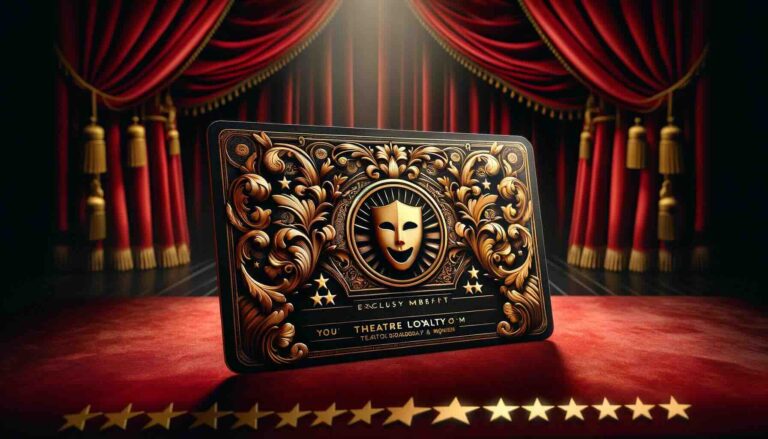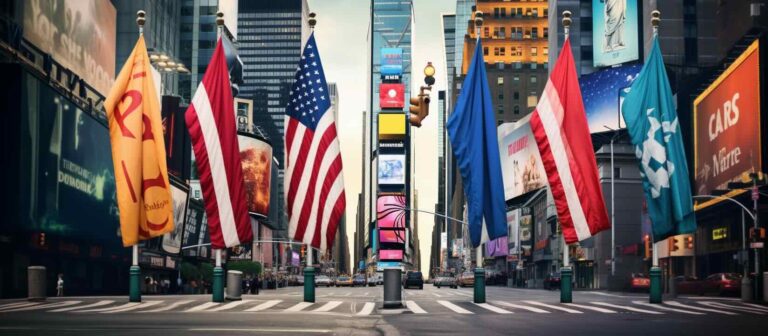Welcome to the enthralling world of Broadway, where the price of admission tells a story as captivating as the performances on stage. This exploration delves deep into the historical trends in Broadway ticket pricing, revealing a narrative interwoven with economic shifts, technological advances, and the timeless allure of theater.
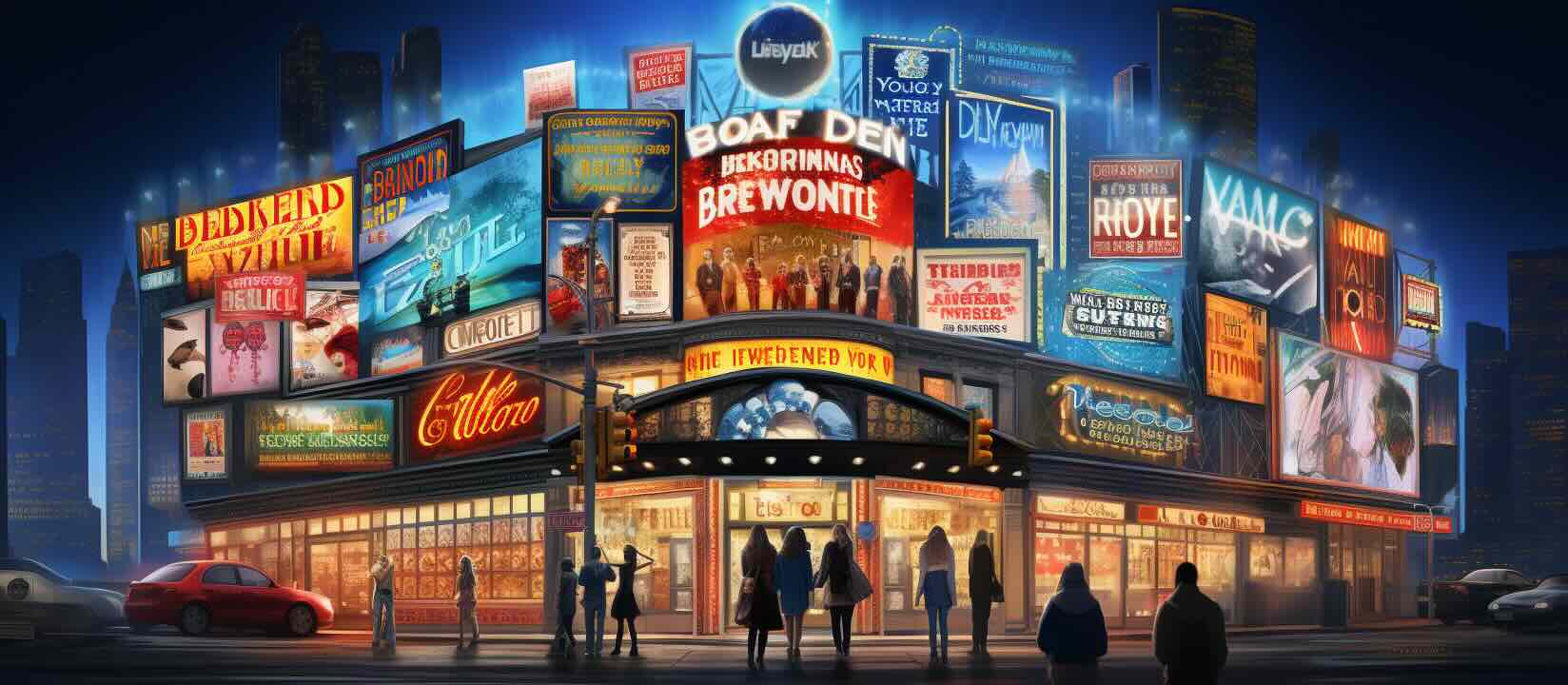
The Early Curtains – Broadway Pricing in its Infancy (1900s-1940s)
In the infancy of Broadway, the stage was set not just for riveting performances but also for the intriguing narrative of ticket pricing. As the 20th century dawned, Broadway was blossoming, a tender sapling in the cultural garden of America. Theaters were temples of drama and comedy, and ticket pricing was as much an art as the performances themselves.
Economic conditions of the time played the role of a stern director in this act. The fluctuations of the economy, akin to the ebb and flow of a dramatic sea, directly influenced ticket costs. In times of affluence, prices soared like a soprano’s climax note; in periods of depression, they fell like a somber bass. This economic pendulum swung back and forth, echoed by the clinking coins of theatergoers.
Production costs, the unsung heroes behind the curtain, also had their say. Every lavish set, each exquisite costume, and all star-studded casts demanded their due, and this was reflected in the ticket prices. The audience, a diverse mosaic of society, further colored the pricing palette. Affluent patrons sought luxury in their theater experience, while the common folk craved an affordable escape from the mundane. Broadway, in its nascent wisdom, catered to all, with a pricing strategy as varied as its audience’s desires.
Contrasting ticket prices with the average income of the era provides a compelling perspective. A ticket to a Broadway show was not merely a purchase; it was a proclamation of one’s social and economic standing. For some, it was a trivial expense; for others, a significant investment. Yet, regardless of this economic divide, the allure of Broadway bridged the gap, drawing in every stratum of society with its siren call.
As the 1940s curtain fell, Broadway’s pricing strategy had evolved from mere numbers to a complex interplay of societal trends, economic forces, and the evergreen human yearning for narrative and spectacle.
The Golden Age Glow – Stability and Surge in Ticket Pricing (1950s-1980s)
As the curtain rose on the 1950s, Broadway was basking in the glow of its Golden Age. This era, a dazzling display of theatrical prowess, saw iconic productions like “West Side Story” and “My Fair Lady” take the stage, captivating audiences and cementing Broadway’s status in the pantheon of performing arts. The allure of the Great White Way was irresistible, and the surging popularity of these marquee productions was mirrored in the evolution of ticket pricing strategies.
During this era, Broadway’s pricing playbook became more sophisticated, introducing premium seating and price categories. Theatres, embracing the allure of exclusivity, rolled out the red carpet for premium seats, offering theatergoers a luxurious vantage point—at a price. These coveted seats, often commanding a king’s ransom, were not just tickets to a show but a passport to prestige. Alongside, a tiered pricing structure emerged, ensuring that the magic of Broadway was accessible to a broader audience, albeit from different perspectives in the auditorium.
The economy’s performance, however, was a drama of its own. The plot thickened as inflation entered the stage, its tendrils weaving into the fabric of ticket prices. The value of a dollar was in a constant dance, and ticket prices swayed along. Yet, despite the economic tremors, Broadway’s allure remained steadfast, its charm undiminished by the fiscal fluctuations of the times.
As the final curtain fell on the 1980s, the Golden Age may have dimmed, but its legacy was indelible. The era had not only shaped the cultural landscape but had also set the stage for the pricing strategies that would dictate the economics of ecstasy and entertainment in the times to come.
Technological Intermission – The Influence of Modernity (1990s-2000s)
As the 20th century waned, a new player emerged on Broadway’s stage: digital technology. This era marked not just a shift but a seismic leap in how Broadway interacted with its audience. Online booking systems made their debut, transforming ticket sales from a physical queue into a virtual marketplace. This digital revolution offered convenience but also introduced a new dynamic: the world of dynamic pricing. Like a skilled trader, Broadway began adjusting ticket prices in real-time, responding to the ebb and flow of demand with the agility of a seasoned performer.
The introduction of these technologies wasn’t just a logistical upgrade; it was a narrative twist in the tale of ticket pricing. Consumers, armed with the power of the internet, could now navigate the pricing labyrinth with a few clicks, turning the ticketing process into a strategic game where timing and insight could unlock the doors to the best deals.
Meanwhile, the stage was set for the era of blockbusters and star power. Productions like “The Lion King” and revivals of age-old classics brought a new wave of audience, their eyes sparkling with anticipation and their wallets ready to experience the magic. The star-studded casts, often a galaxy of A-list celebrities, added an extra sheen to the productions, making tickets to these shows a coveted commodity. The pricing of these spectacles reflected their stature, with premium prices becoming a testament to their blockbuster status.
The revival of classic plays and musicals was another intriguing subplot in this act. These productions, draped in nostalgia and artistic reverence, offered a contrasting pricing narrative. Balancing the reverence for the classics with the economics of theatre production, Broadway strategized a pricing model that honored the past while embracing the present. This nuanced approach ensured that the timeless tales of yesteryears remained accessible and enticing to audiences, old and new.
As the curtain fell on the dawn of the new millennium, Broadway had not only adapted to the digital age but had also woven technology into the very fabric of its ticketing tale, crafting a narrative that was as dynamic as the performances it hosted.
The Contemporary Spotlight – Ticket Pricing Today (2010s-Present)
Stepping into the contemporary spotlight, Broadway’s narrative unfolds in a landscape where the bright lights of tradition meet the neon glow of modernity. Today, ticket pricing on Broadway is not just a number on a tag; it’s the result of a meticulous choreography involving production value, celebrity dazzle, and audience engagement, all performed on the digital stage of the 21st century.
First, let’s spotlight production value. Today’s shows are more than performances; they are immersive experiences. The intricate set designs, cutting-edge technology, and high-caliber performances set the stage for ticket prices. Each element adds a layer to the cost but also enriches the audience’s experience, justifying the price of admission with every curtain rise.
Celebrity involvement has turned the spotlight even brighter. Big names bring a gravitational pull, drawing in crowds and adding an extra zero to ticket values. The star power is palpable, with the presence of celebrated icons turning a night at the theater into a rendezvous with glamour.
Audience engagement strategies have evolved, too. Theaters now employ a medley of tactics, from early bird specials to last-minute discounts, ensuring that every seat is an opportunity for an unforgettable experience. The pricing strategy is dynamic, adapting to the rhythm of demand and the melody of the market.
The digital revolution continues to play a lead role in this act. Online platforms are the new box offices, and social media buzz can make or break a show’s financial success. The secondary market, too, has emerged as a formidable player, with tickets being traded like treasured artifacts, sometimes at prices that soar well above face value.
Consider recent hits like “Hamilton” or “Dear Evan Hansen.” These shows not only captured the hearts of audiences but also showcased innovative pricing strategies. “Hamilton,” with its revolutionary approach to storytelling, also revolutionized ticket sales, employing a premium pricing model that made headlines. The show’s strategy was clear: exceptional artistry warrants an exceptional price.
As we stand in the contemporary spotlight, it’s evident that Broadway’s pricing strategies are as multifaceted as the performances themselves. The stage is set not just for entertainment but for a complex interplay of artistry, celebrity, and technology, each contributing to the final bow: the price on the ticket.
The Pandemic Interlude – A Sudden Drop and Gradual Rise (2020-2023)
As the 2020s dawned, Broadway faced its most formidable antagonist yet: the COVID-19 pandemic. The marquee lights dimmed, and the theaters, once pulsating with life, stood silent. The pandemic’s grip brought an unprecedented intermission, shuttering venues and casting a shadow of uncertainty over the realm of live theater.
The impact was immediate and profound. Theater closures, a necessary yet heart-wrenching response to the global health crisis, turned bustling streets into ghostly corridors. Consumer behavior shifted dramatically; the communal joy of theater-going was replaced by the solitude of streaming from home. Ticket sales plummeted, and the pricing strategies, once a dynamic dance of demand and spectacle, were frozen in time.
Yet, in this interlude of quiet, the resilience of Broadway began to whisper promises of a comeback. The industry, known for its creativity and tenacity, started scripting its revival. Strategies were reimagined, not just to reopen the doors but to reintroduce the magic of live theater in a world forever changed.
Ticket pricing underwent a thoughtful reconfiguration. Flexibility became the watchword, with theaters introducing more adaptable pricing models to accommodate the uncertainties of the post-pandemic world. Offers, discounts, and more inclusive pricing strategies were employed, not merely as a lure for audiences but as a testament to Broadway’s commitment to keeping the arts accessible and vibrant.
The revival was gradual but undeniable. As safety measures were implemented and audiences began to trickle back, the heart of Broadway started beating once again. The pandemic interlude, while a tale of loss and resilience, also became a narrative of reinvention and hope. Broadway’s response to this unprecedented challenge reaffirmed its place not just as an entertainment hub but as a beacon of human spirit and creativity.
The Audience’s Take – Affordability and Accessibility
In the grand theater of Broadway, the audience is more than a spectator; it’s an integral part of the narrative. The balance between profitability for producers and affordability for theatergoers is a delicate dance, a duet of necessity and aspiration. On one hand, the high production costs and the allure of star-studded casts necessitate a pricing strategy that ensures sustainability. On the other, the love for the arts and the collective cultural experience beckons for accessibility and inclusivity in ticket pricing.
Recognizing this, Broadway has taken strides to harmonize this balance. Initiatives and programs aimed at making theater more accessible have emerged, echoing the industry’s commitment to diversity and inclusion. Programs like lottery tickets, rush tickets, and special discount offerings have opened the doors of theaters wider, inviting a broader audience to partake in the magic of live performances. These initiatives are not just tickets to a show; they’re invitations to a wider demographic, ensuring that the transformative experience of theater is not a luxury, but a staple of cultural nourishment.
But what does the audience think? Surveys and studies have delved into the theatergoers’ psyche, unraveling the complex relationship between ticket pricing and perceived value. The findings paint a picture of discernment and passion. Audience members view their purchase not just in terms of financial transaction but as an investment in an experience, a memory, and the cultural enrichment that only live theater can offer. The value of a Broadway show transcends the price on the ticket; it’s woven into the very fabric of the performance, the ambiance of the theater, and the shared journey of the audience.
The voice of the audience resonates clear and strong: affordability and accessibility are not just perks; they are imperatives. As Broadway continues to evolve, the audience’s perspective serves as a guiding star, ensuring that the path forward is not just profitable but also inclusive, vibrant, and resonant with the heartbeat of a diverse and passionate community.
Conclusion
As the final curtain falls on our exploration of the historical trends in Broadway ticket pricing, it’s clear that the journey of a Broadway musical ticket is a tale of resilience, innovation, and the relentless pursuit of harmony between art and commerce. From the early curtains of the 20th century to the contemporary spotlight of today, ticket pricing has danced to the rhythm of societal changes, economic fluctuations, and technological advancements.
The price of a Broadway musical ticket, much like the performances themselves, tells a story of an industry’s adaptation, an audience’s passion, and a cultural institution’s unwavering commitment to making the world of theater an inclusive, vibrant, and enriching part of our collective human experience. In the end, each ticket is not just a pass to a show; it’s a testament to Broadway’s enduring legacy and its pivotal role in the art of storytelling.
